Masterpiece Story: L.O.V.E. by Maurizio Cattelan
In the heart of Milan, steps away from the iconic Duomo, Piazza Affari hosts a provocative sculpture by Maurizio Cattelan. Titled...
Lisa Scalone 8 July 2024
Judgment Day by Aaron Douglas is a masterpiece of Black history. It encapsulates the dynamic culture of the Harlem Renaissance through its striking colors and patterned lines. Hidden stories fill the scene, awaiting the viewer to unlock their mysteries.
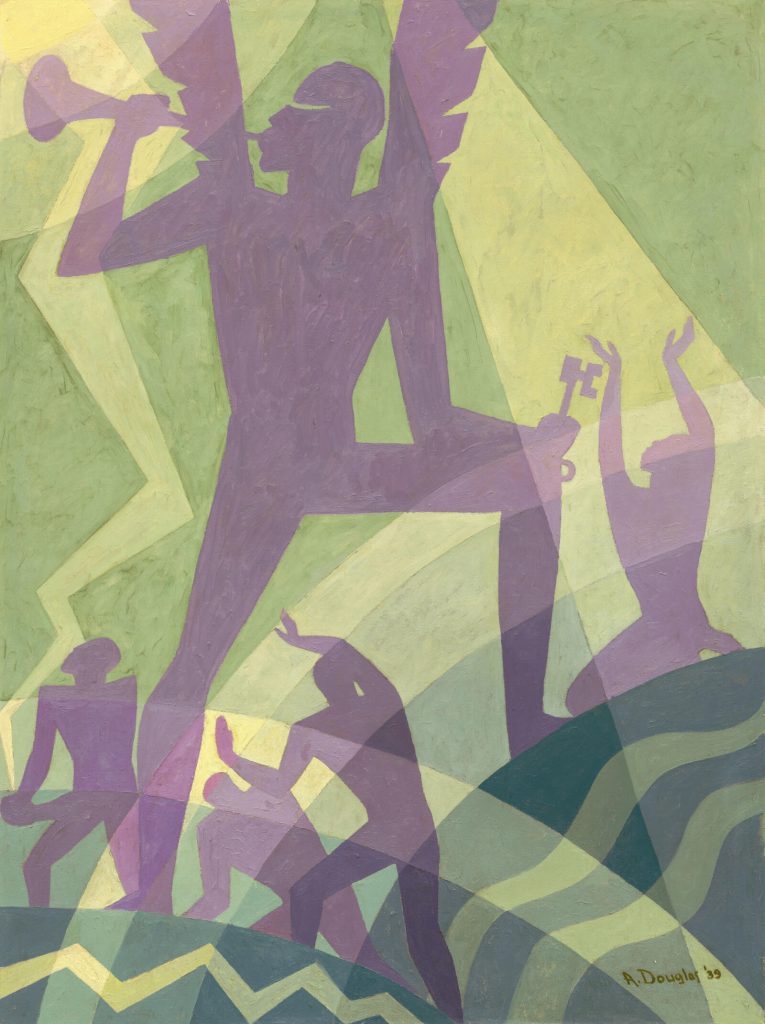
Aaron Douglas, Judgment Day, 1939, oil on tempered hardboard, National Gallery of Art, Washington, DC, USA.
Aaron Douglas (1899-1979) was one of the most prominent Black illustrators and painters of the early 20th century in the USA. He was an artist at the epicenter of the Harlem Renaissance which was a golden age for Black music, art, and literature in the neighborhood of Harlem, New York City during the 1920s and 1930s. Douglas and other artists of the Harlem Renaissance aimed to promote Black cultural achievement, cultivate Black pride, and foster national racial tolerance. It was during this powerful and influential period in Black history when Aaron Douglas created Judgment Day, a masterpiece of Black art.
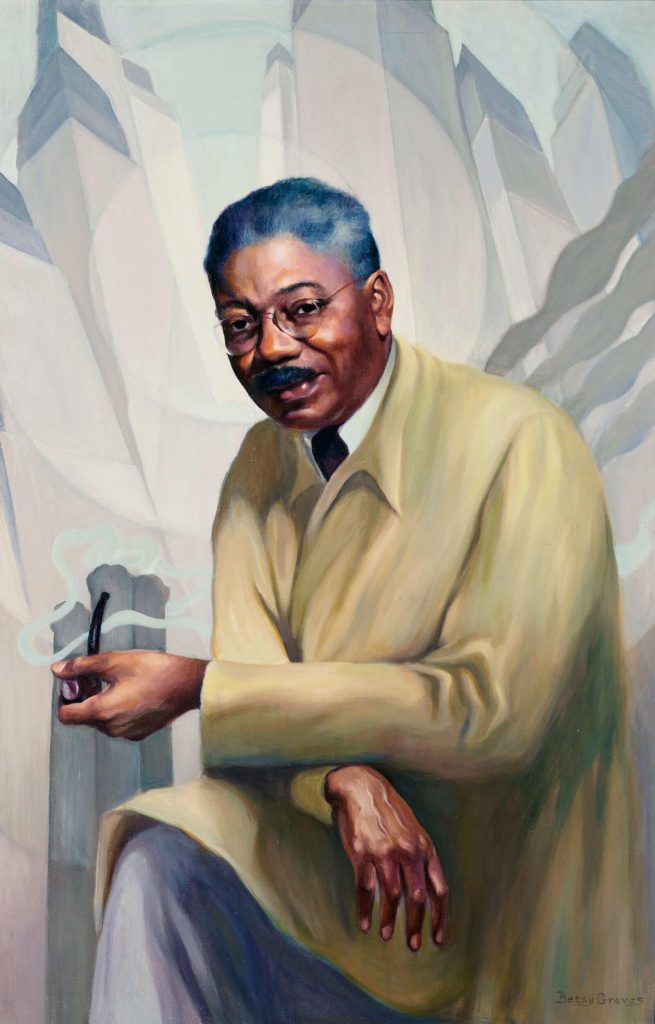
Betsy Graves Reyneau, Portrait of Aaron Douglas, 1953, National Portrait Gallery, Washington, DC, USA.
Aaron Douglas created Judgment Day in 1939 as a painting, but it was not the first time that Douglas had covered this Biblical subject. 12 years earlier in 1927, Douglas was asked to illustrate a book, God’s Trombones, by the prominent writer James Weldon Johnson. The book contains seven sermons, each covering a different Biblical story or theme: Creation, Prodigal Son, Go Down Death, Noah Built the Ark, Crucifixion, Let My People Go, and Judgment Day. Douglas, therefore, created an illustration for Judgment Day as gouache on paper to be reproduced in the printed book. The small black-and-white illustration was a model for the later large colorful painting.
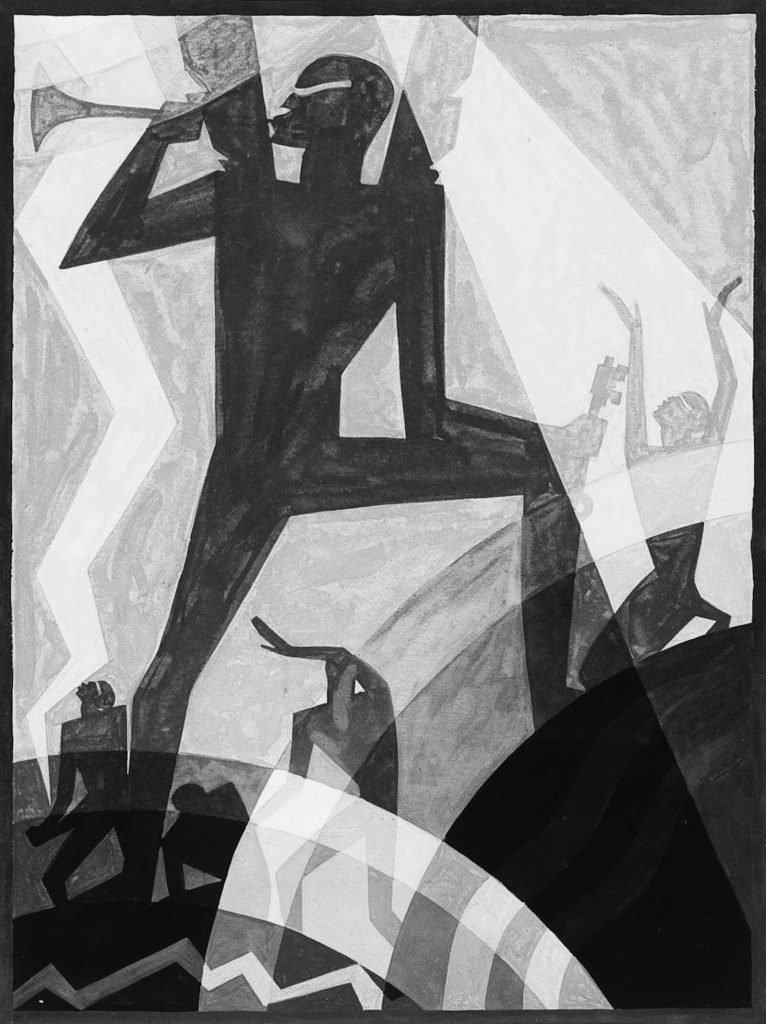
Aaron Douglas, Judgment Day, 1927, gouache on paper, God’s Trombones, Viking Press, New York City, USA.
The painting measures 91.44 centimeters wide by 121.92 centimeters high (36 in wide by 48 in high). It is an oil on tempered hardboard which makes it an extremely durable image because tempered hardboard is a high-density fiberboard made from wood fibers and resin. It is, therefore, unlike canvas, resistant to humidity, and does not easily warp.
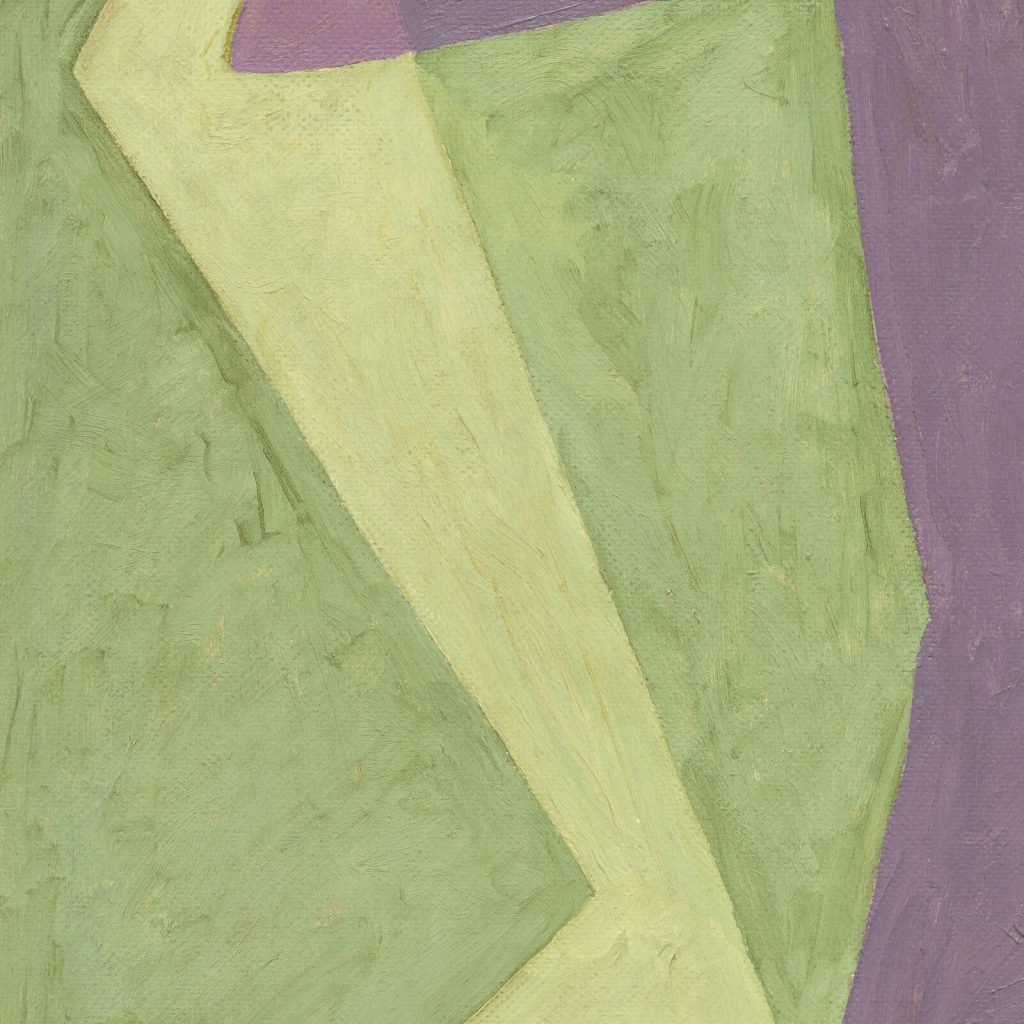
Aaron Douglas, Judgment Day, 1939, oil on tempered hardboard, National Gallery of Art, Washington, DC, USA. Detail.
The image depicts the Biblical story of Judgment Day. It is the Christian belief that, during the Apocalypse, all the souls of the living and the dead will be judged by God. It can be a great day of reward for the pure, or a horrible day of punishment for the damned. Archangel Gabriel, God’s messenger, dominates the scene, as he is the largest figure. He is easily identifiable by his outstretched wings and his trumpet calling forth the souls. He is surrounded by four smaller figures and the universal elements of land, water, and sky.
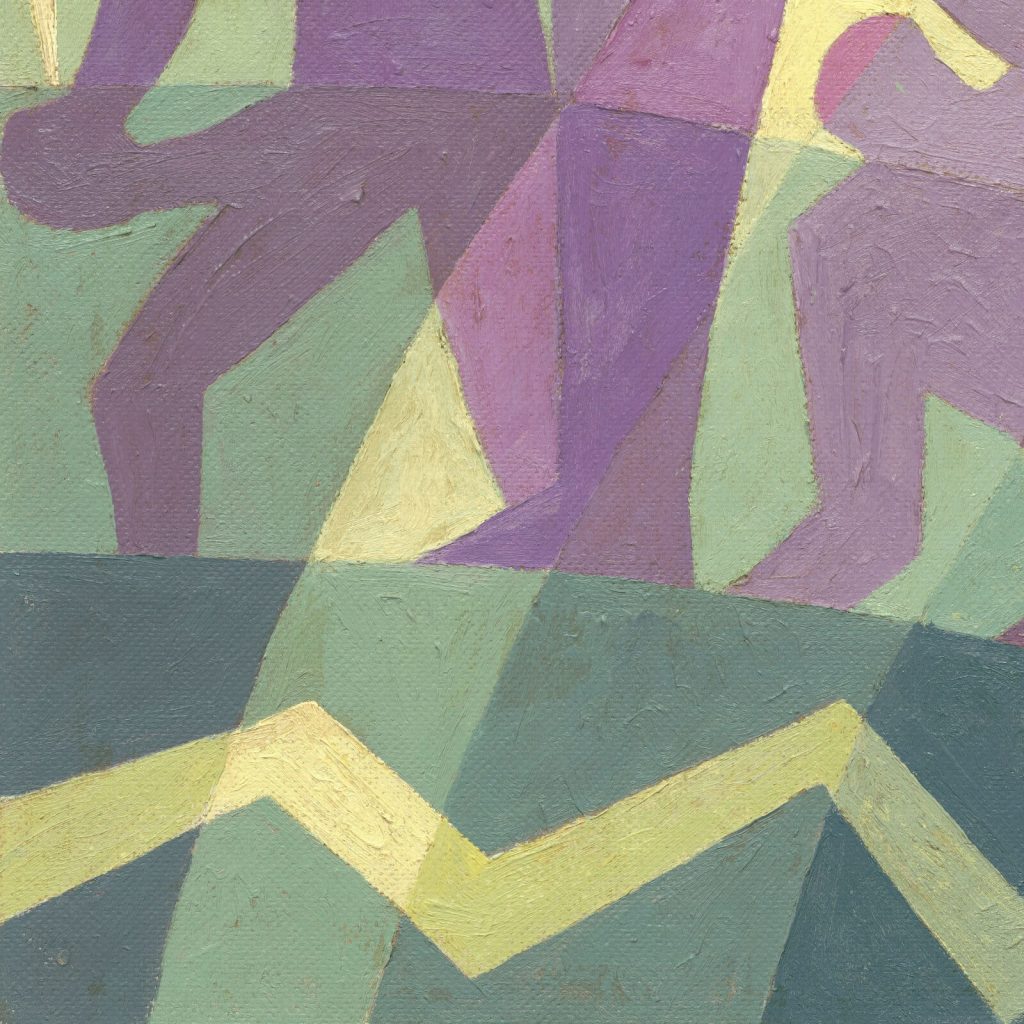
Aaron Douglas, Judgment Day, 1939, oil on tempered hardboard, National Gallery of Art, Washington, DC, USA. Detail.
The divine figure of Gabriel is easily three to four times the size of the surrounding mortal souls. As in ancient Egyptian artwork, Gabriel is the largest figure and is therefore the most important figure in the scene. Also similar to ancient Egyptian art is the stylized positioning of Gabriel’s body. His chest and eye are in full frontal perspective, however, his face, feet, and horn are in sharp profile. This visual combination is anatomically impossible but stylistically delivers a strong punch of shape and line.
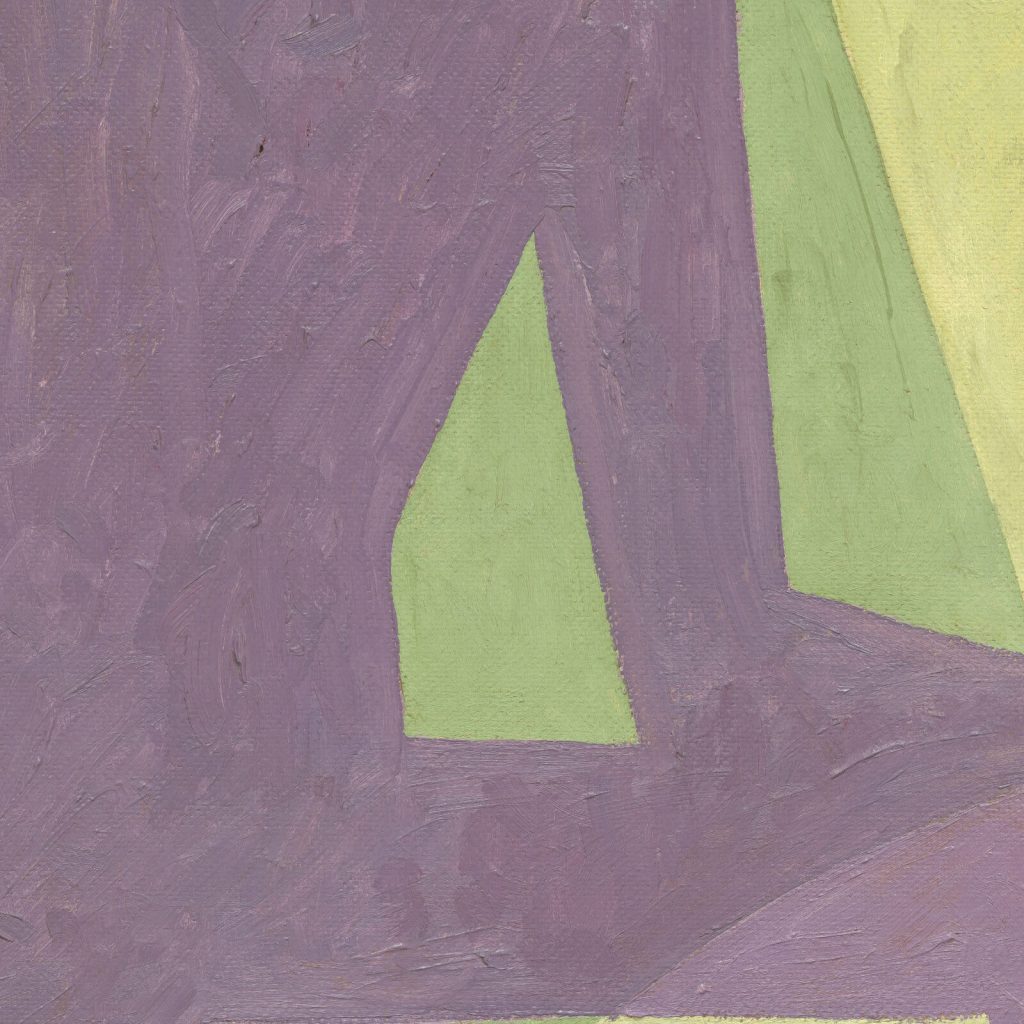
Aaron Douglas, Judgment Day, 1939, oil on tempered hardboard, National Gallery of Art, Washington, DC, USA. Detail.
Archangel Gabriel is the only figure in the painting to have a clearly defined eye, as the surrounding four figures are merely silhouettes. This detail increases his importance. Only Gabriel can currently see God’s message.
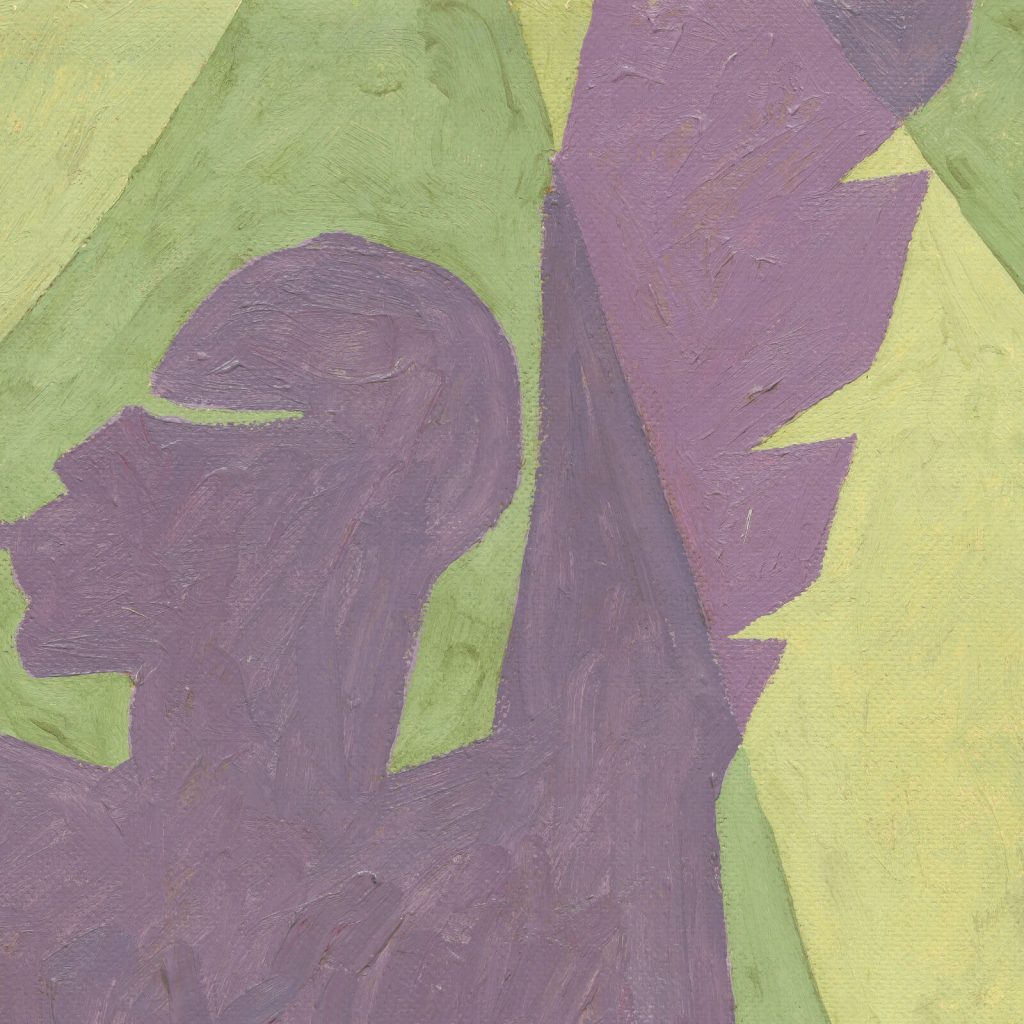
Aaron Douglas, Judgment Day, 1939, oil on tempered hardboard, National Gallery of Art, Washington, DC, USA. Detail.
He is also the only figure to hold accessories. In his left hand, there is the trumpet. The blaring noise calls forth everyone’s souls. In his right hand, there is a skeleton key. The key is the key to heaven, and it unlocks salvation. His wings extend off the vertical edge of the hardboard which implies a larger unseen space. The viewer is presented only a cropped perspective of a more expansive event.
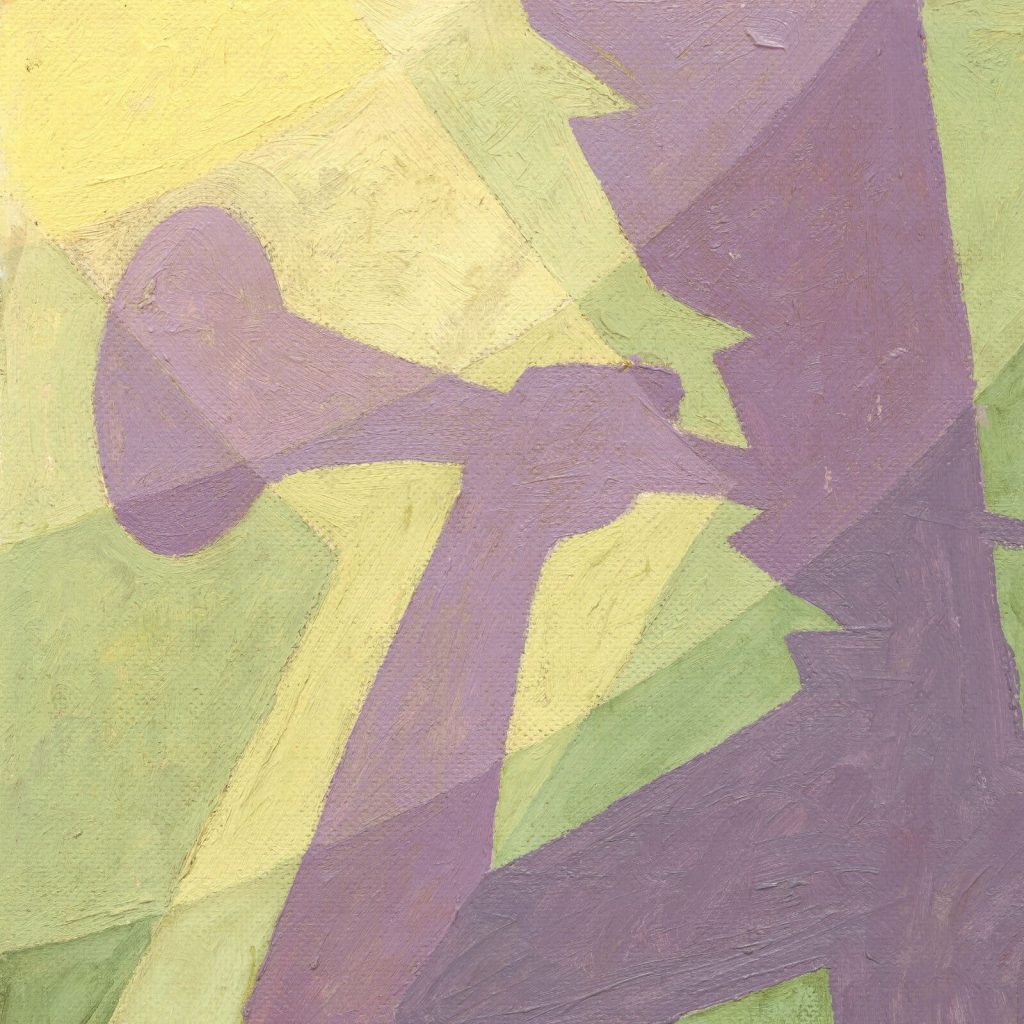
Aaron Douglas, Judgment Day, 1939, oil on tempered hardboard, National Gallery of Art, Washington, DC, USA. Detail.
No art is created in a vacuum. Every piece is influenced by a previous or contemporary artist, event, or movement. For Aaron Douglas, he was deeply influenced by Winold Reiss who acted as his artistic mentor when Douglas first moved to New York City in 1925. Reiss was a German émigré who relocated to the USA in 1913 just prior to World War One. He brought with him all the excitement of European Modernism spearheaded by Pablo Picasso and Georges Braque.
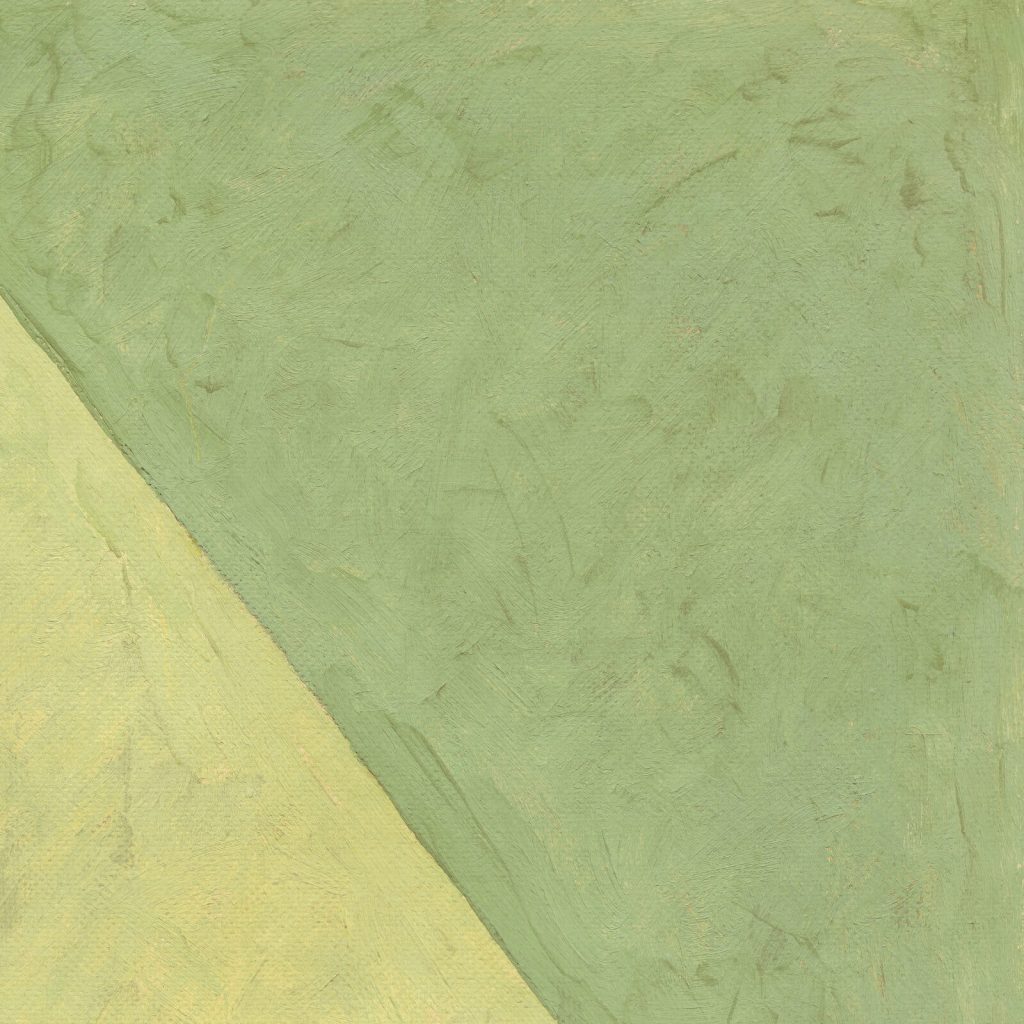
Aaron Douglas, Judgment Day, 1939, oil on tempered hardboard, National Gallery of Art, Washington, DC, USA. Detail.
European Modernism included the rising trends of Art Deco and Cubism which are strongly seen in the visual style of Judgment Day. For example, complex shapes such as the human body are reduced to geometric forms. Natural elements are reduced to patterns, such as wavy lines representing water in the bottom right corner and zigzag lines representing land in the bottom left corner.
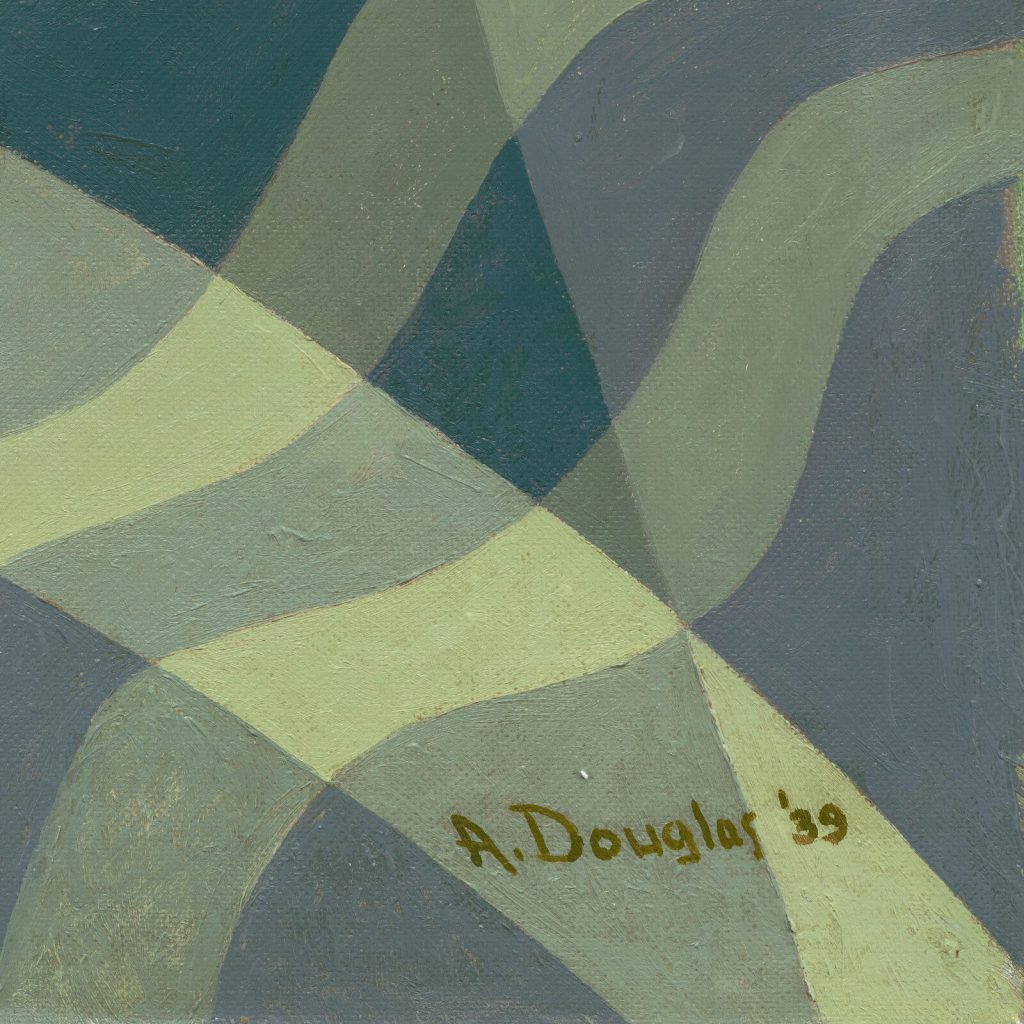
Aaron Douglas, Judgment Day, 1939, oil on tempered hardboard, National Gallery of Art, Washington, DC, USA. Detail.
Elements of light dominate the sky of the panel’s upper half. In the top left corner are yellow concentric bands implying the Sun and suggesting the divine light of God. A bolt of lightning crashes down the panel’s left side with its symbolic zigzag shape.
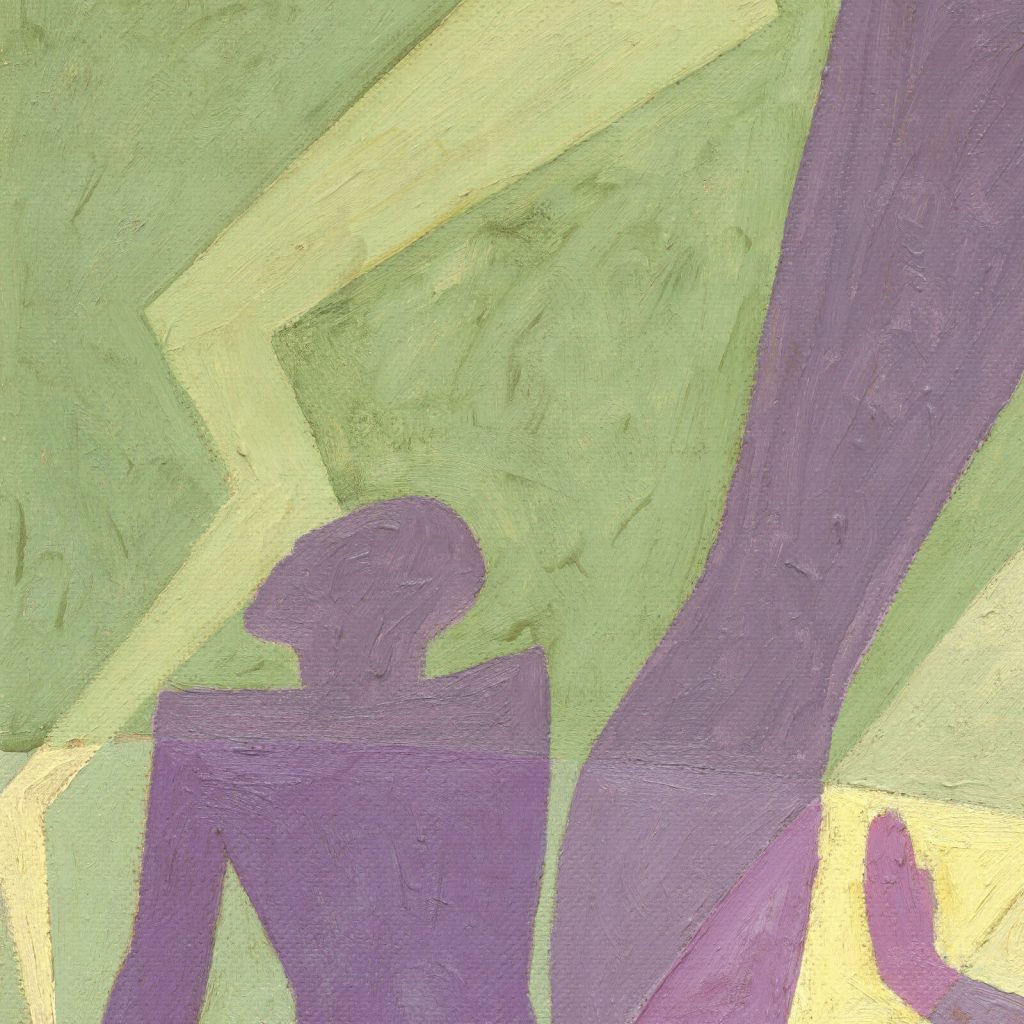
Aaron Douglas, Judgment Day, 1939, oil on tempered hardboard, National Gallery of Art, Washington, DC, USA. Detail.
A beam of light, almost like a spotlight, projects across the panel’s right side and illuminates a sitting figure with its hands raised in the air. There is an overwhelming sense that cosmic and divine light is filling the air with its purifying energy. From light reveals the truth of judgment.
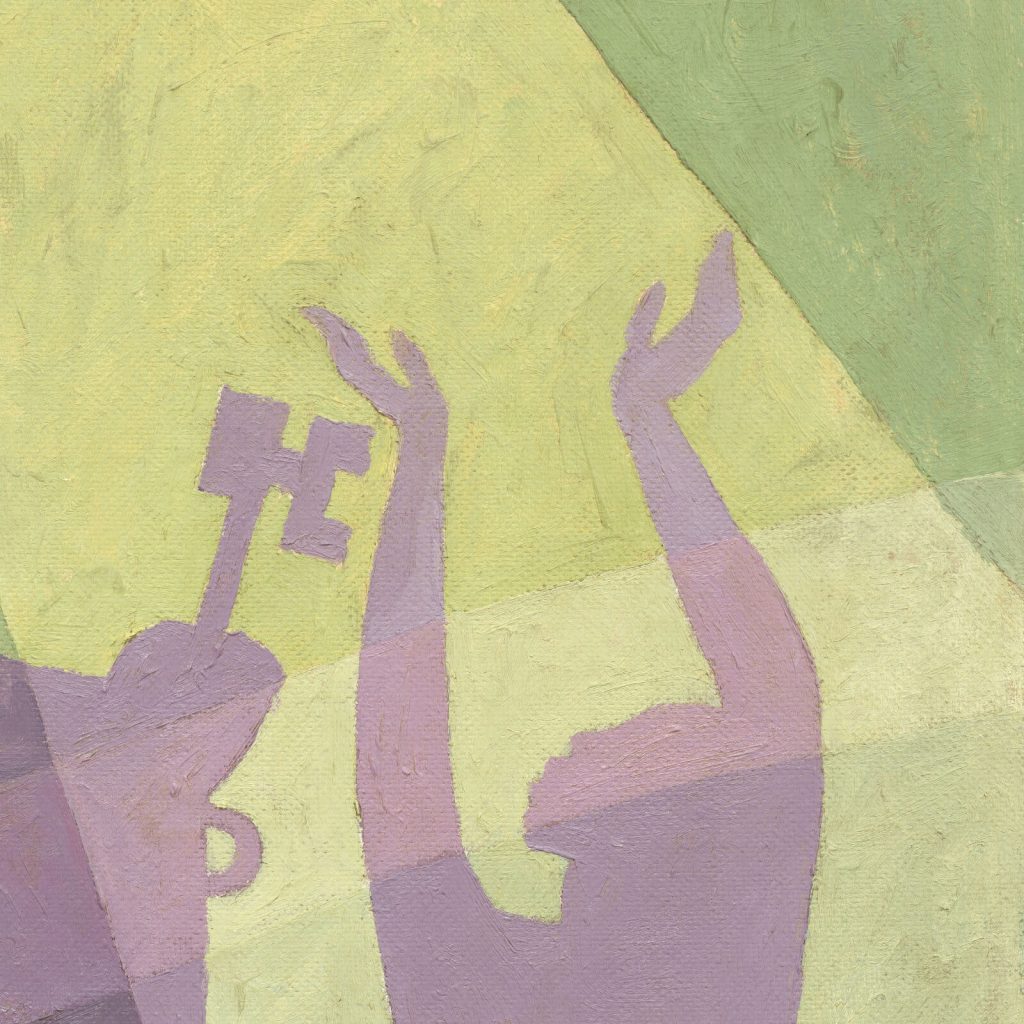
Aaron Douglas, Judgment Day, 1939, oil on tempered hardboard, National Gallery of Art, Washington, DC, USA. Detail.
Elements of sound also interplay in the scene. In the panel’s bottom half are the round elements of land (zigzags) and sea (waves). Rising above these two elements are light green concentric bands. These layers are the bouncing echoes of Gabriel’s horn. As he blasts his trumpet, the earth-shattering and sea-splitting sound reverberates across the world. It fills the scene with deafening glory, accentuated by the crash of rolling thunder following the strikes of lightning.

Aaron Douglas, Judgment Day, 1939, oil on tempered hardboard, National Gallery of Art, Washington, DC, USA. Detail.
Judgment Day was acquired in 2014 by the National Gallery of Art in Washington, DC. It coincided with the purchase of Let My People Go by the Metropolitan Museum of Art in New York, NY. Both images are from the God’s Trombones painting series that Aaron Douglas created in the late 1930s after revisiting his 1927 illustration series of the same name. Hence in 2014, two painted images by Aaron Douglas entered the nation’s two most prestigious art institutions. It was a landmark move towards recognizing Douglas’ talent. It also signaled a continuing shift towards inclusivity and publicly embracing artwork from a Black perspective.
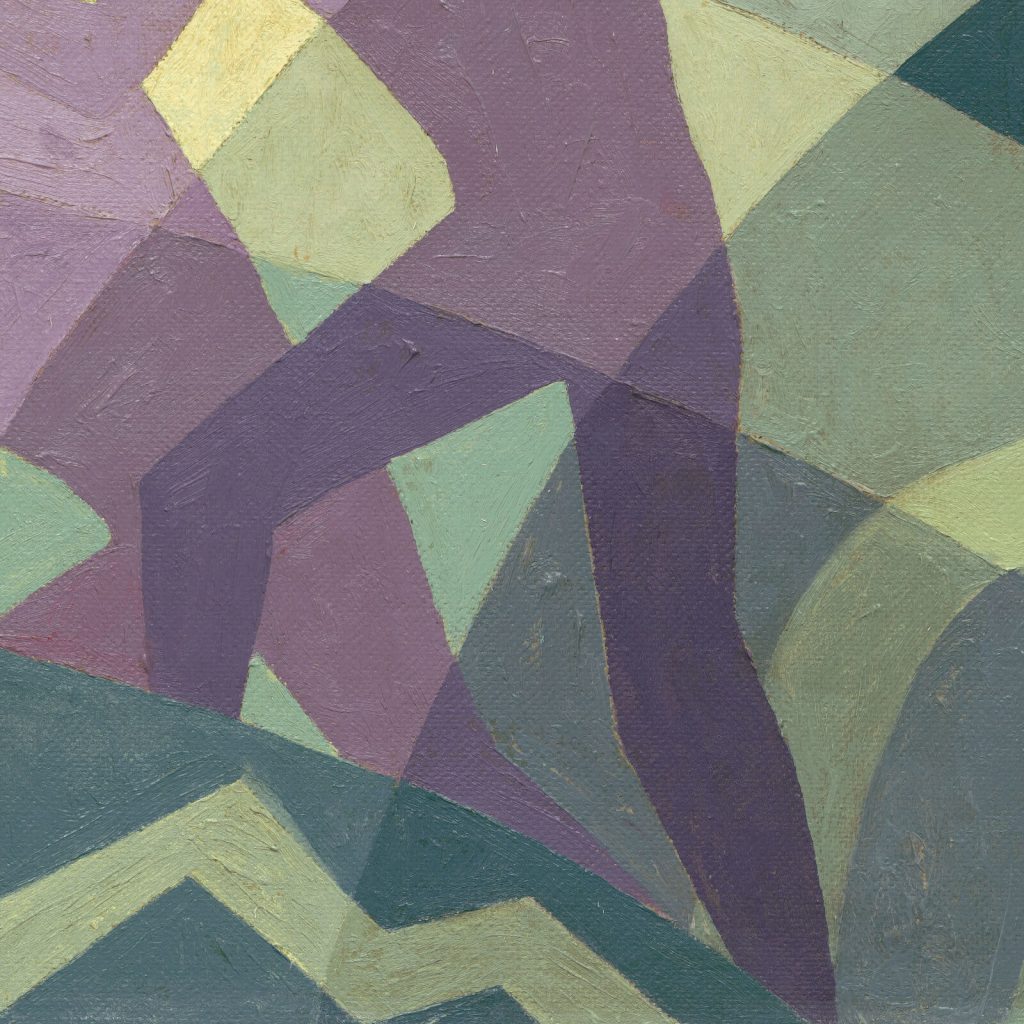
Aaron Douglas, Judgment Day, 1939, oil on tempered hardboard, National Gallery of Art, Washington, DC, USA. Detail.
Judgment Day is a masterpiece of Black talent, an ambassador of Black culture, and a symbol of Black history.
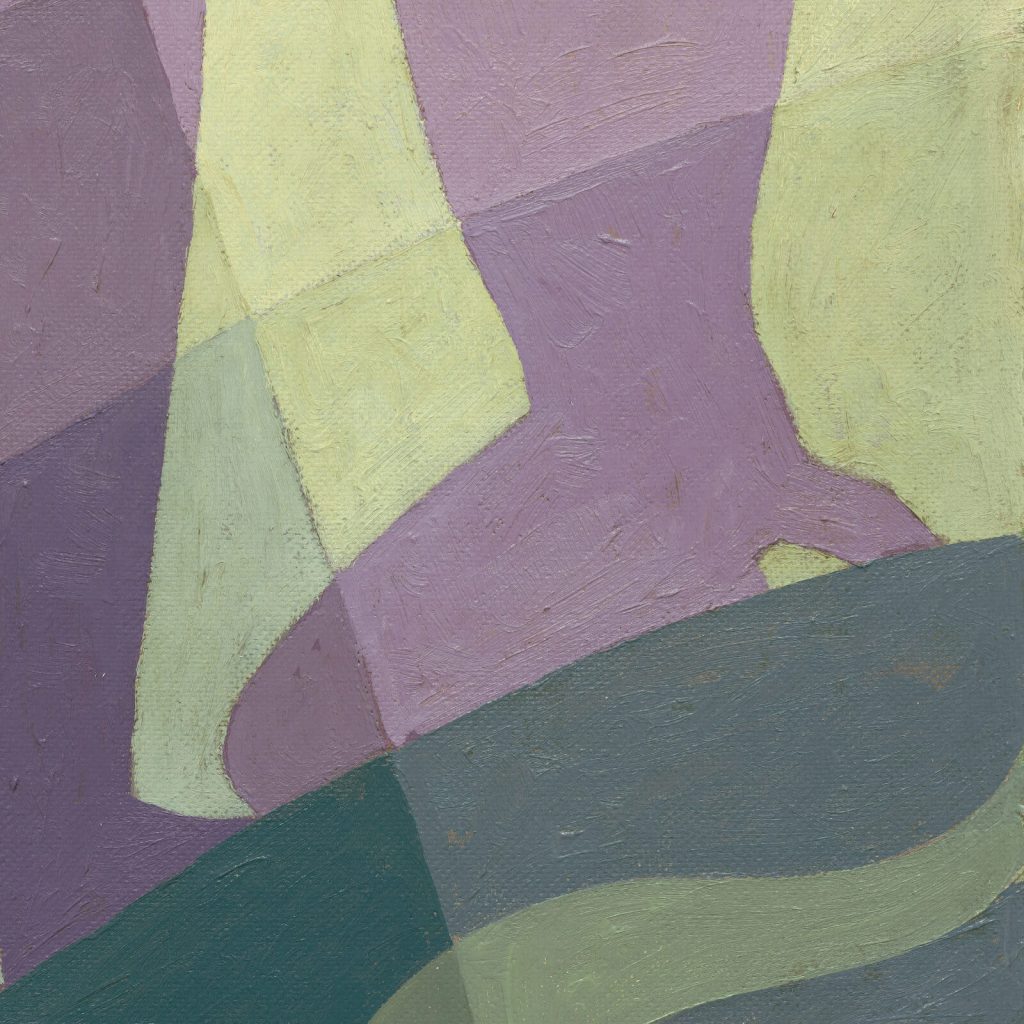
Aaron Douglas, Judgment Day, 1939, oil on tempered hardboard, National Gallery of Art, Washington, DC, USA. Detail.
“Aaron Douglas.” Collection. National Portrait Gallery, Washington, DC, USA. Retrieved 11 February 2023.
Anderson, Nancy. “Judgment Day.” Collection. National Gallery of Art, Washington, DC, USA. Retrieved 11 February 2023.
Johnson, James Weldon, and Aaron Douglas. God’s Trombones: Seven Negro Sermons in Verse. 1st ed. New York City, NY: Viking Press, 1927. Electronic Version. Apex Data Services, Inc., and Brian Dietz. Documenting the American South. University of North Carolina Library, Chapel Hill, NC, 2004.
DailyArt Magazine needs your support. Every contribution, however big or small, is very valuable for our future. Thanks to it, we will be able to sustain and grow the Magazine. Thank you for your help!